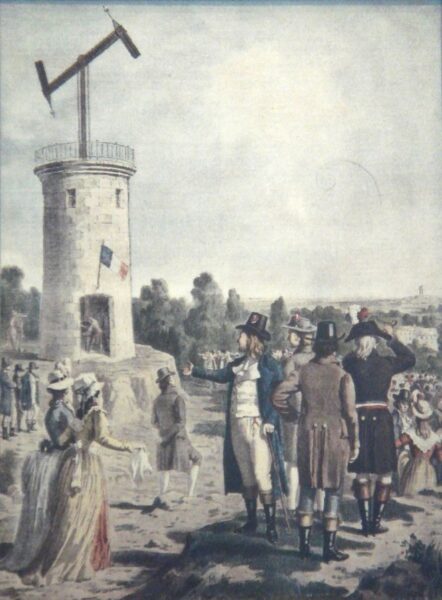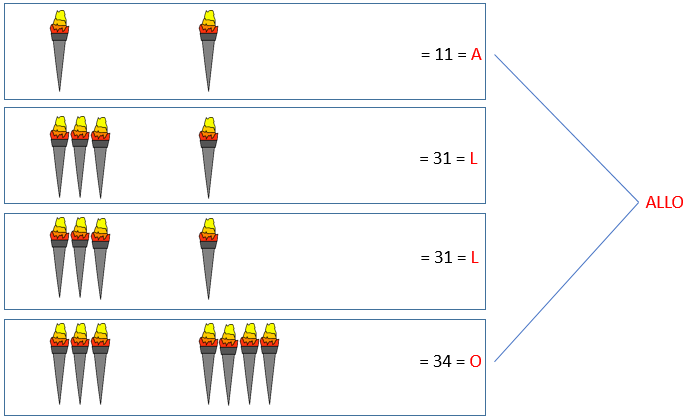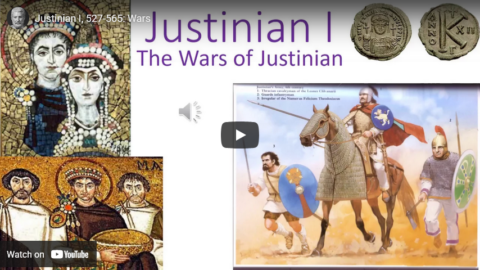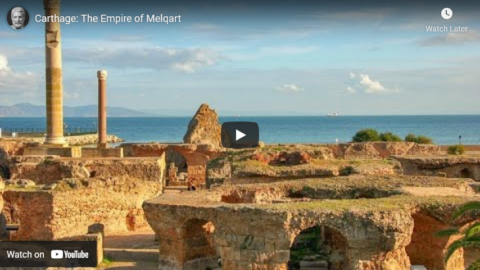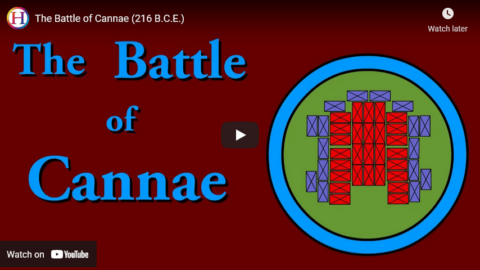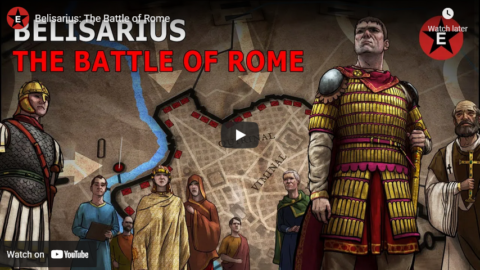Drachinifel
Published Sep 13, 2023Today we take a look at the strategy and shipping of the 1st Punic War with expert Bret Devereaux!
(more…)
March 5, 2024
The 1st Punic War – Corvus, Rams and Drachma
February 26, 2024
Rome: Part 4 – The First Punic War 264-241 BC
seangabb
Published Feb 25, 2024This course provides an exploration of Rome’s formative years, its rise to power in the Mediterranean, and the exceptional challenges it faced during the wars with Carthage.
• Growth of Tensions between Rival Powers
• Differences of Civilisation
• The Outbreak of War
• The Course of War
• Growth of Roman Sea Power
• The End and Significance of the War
(more…)
February 20, 2024
Rome: Part 3 – The Expansion of Roman Power
seangabb
Published Feb 18, 2024This course provides an exploration of Rome’s formative years, its rise to power in the Mediterranean, and the exceptional challenges it faced during the wars with Carthage.
Lecture 3: The Expansion of Roman Power
• The Conquest of Central Italy
• The Gallic Sack of 390 BC
• The Conquest of the Greek Cities
• Relations with Carthage
(more…)
January 12, 2024
QotD: Rome’s Italic “allies”
The Roman Republic spent its first two and a half centuries (or so) expanding fitfully through peninsular Italy (that is, Italy south of the Po River Valley, not including Sicily). This isn’t the place for a full discussion of the slow process of expanding Roman control (which wouldn’t be entirely completed until 272 with the surrender of Tarentum). The consensus position on the process is that it was one in which Rome exploited local rivalries to champion one side or the other making an ally of the one by intervening and the other by defeating and subjecting them (this view underlies the excellent M.P. Fronda, Between Rome and Carthage: Southern Italy During the Second Punic War (2010); E.T. Salmon, The Making of Roman Italy (1982) remains a valuable introduction to the topic). More recently, N. Terranato, The Early Roman Expansion into Italy (2019) has argued for something more based on horizontal elite networks and diplomacy, though this remains decidedly a minority opinion (I myself am rather closer to the consensus position, though Terranato has a point about the role of elite negotiation in the process).
The simple (and perhaps now increasingly dated) way I explain this to my students is that Rome follows the Goku Model of Imperialism: I beat you, therefore we are now friends. Defeated communities in Italy (the system is different outside of Italy) are made to join Rome’s alliance network as socii (“allies”), do not have tribute imposed on them, but must supply their soldiers to fight with Rome when Rome is at war, which is always.
It actually doesn’t matter for us how this expansion was accomplished; rather we’re interested in the sort of order the Romans set up when they did expand. The basic blueprint for how Rome interacted with the Italians may have emerged as early as 493 with the Foedus Cassianum, a peace treaty which ended a war between Rome and [the] Latin League (an alliance of ethnically Latin cities in Latium). To simplify quite a lot, the Roman “deal” with the communities of Italy which one by one came under Roman power went as follows:
- All subject communities in Italy became socii (“allies”). This was true if Rome actually intervened to help you as your ally, or if Rome intervened against you and conquered your community.
- The socii retained substantial internal autonomy (they kept their own laws, religions, language and customs), but could have no foreign policy except their alliance with Rome.
- Whenever Rome went to war, the socii were required to send soldiers to assist Rome’s armies; the number of socii in Rome’s armies ranged from around half to perhaps as much as two thirds at some points (though the socii outnumbered the Romans in Italy about 3-to-1 in 225, so the Romans made more strenuous manpower demands on themselves than their allies).
- Rome didn’t impose tribute on the socii, though the socii bore the cost of raising and paying their detachments of troops in war (except for food, which the Romans paid for, Plb. 6.39.14).
- Rome goes to war every year.
- No, seriously. Every. Year. From 509 to 31BC, the only exception was 241-235. That’s it. Six years of peace in 478 years of republic. The socii do not seem to have minded very much; they seem to have generally been as bellicose as the Romans and anyway …
- The spoils of Roman victory were split between Rome and the socii. Consequently, as one scholar memorably put it, the Roman alliance was akin to, “a criminal operation which compensates its victims by enrolling them in the gang and inviting them to share to proceeds of future robberies” (T. Cornell, The Beginnings of Rome (1995)).
- The alliance system included a ladder of potential relationships with Rome which the Romans might offer to loyal allies.
Now this isn’t a place for a long discussion of the Roman alliance system in Italy (that place is in the book I am writing), so I want us to focus more narrowly on the bolded points here and how they add up to significant changes in who counted as “Roman” over time. But I should note here that while I am calling this a Roman “alliance system” (because the Romans call these fellows socii, allies) this was by no means an equal arrangement: Rome declared the wars, commanded the armies and set the quotas for military service. The “allies” were thus allies in name only, but in practice subjects; nevertheless the Roman insistence on calling them allies and retaining the polite fiction that they were junior partners rather than subject communities, by doing things like sharing the loot and glory of victory, was a major contributor to Roman success (as we’ll see).
First, the Roman alliance system was split into what were essentially tiers of status. At the top were Roman citizens optimo iure (“full rights”, literally “with the best right”) often referred to on a community basis as civitas cum suffragio (“citizenship with the vote”). These were folks with the full benefits of Roman citizenship and the innermost core of the Roman polity, who could vote and (in theory, though for people of modest means, only in theory) run for office. Next were citizens non optimo iure, often referred to as having civitas sine suffragio (“citizenship without the vote”); they had all of the rights of Roman citizens except for political participation in Rome. This was almost always because they lived in communities well outside the city of Rome with their own local government (where they could vote); we’ll talk about how you get those communities in a second. That said, citizens without the vote still had the right to hold property in Roman territory and conduct business with the full protection of a Roman citizen (ius commercii) and the right to contract legal marriages with Roman citizens (ius conubii). They could do everything except for vote or run for offices in Rome itself.
Next down on the list were socii (allies) of Latin status (note this is a legal status and is entirely disconnected from Latin ethnicity; by the end of this post, Rome is going to be block-granting Latin status to Gauls in Cisalpine Gaul, for instance). Allies of Latin status got the benefits of the ius commercii, as well as the ability to move from one community with Latin status to another without losing their status. Unlike the citizens without the vote, they didn’t automatically get the right to contract legal marriages with Roman citizens, but in some cases the Romans granted that right to either individuals or entire communities (scholars differ on exactly how frequently those with Latin status would have conubium with Roman citizens; the traditional view is that this was a standard perk of Latin status, but see Roselaar, op. cit.). That said, the advantages of this status were considerable – particularly the ability to conduct business under Roman law rather than what the Romans called the “ius gentium” (“law of peoples”) which governed relations with foreigners (peregrini in Roman legal terms) and were less favorable (although free foreigners in Rome had somewhat better protections, on the whole, than free foreigners – like metics – in a Greek polis).
Finally, you had the socii who lacked these bells and whistles. That said, because their communities were allies of Rome in Italy (this system is not exported overseas), they were immune to tribute, Roman magistrates couldn’t make war on them and Roman armies would protect them in war – so they were still better off than a community that was purely of peregrini (or a community within one of Rome’s provinces; Italy was not a province, to be clear).
The key to this system is that socii who stayed loyal to Rome and dutifully supplied troops could be “upgraded” for their service, though in at least some cases, we know that socii opted not to accept Roman citizenship but instead chose to keep their status as their own community (the famous example of this were the allied soldiers of Praenesti, who refused Roman citizenship in 211, Liv. 23.20.2). Consequently, whole communities might inch closer to becoming Romans as a consequence of long service as Rome’s “allies” (most of whom, we must stress, were at one point or another, Rome’s Italian enemies who had been defeated and incorporated into Rome’s Italian alliance system).
But I mentioned spoils and everyone loves loot. When Rome beat you, in the moment after you lost, but before the Goku Model of Imperialism kicked in and you became friends, the Romans took your stuff. This might mean they very literally sacked your town and carried off objects of value, but it also – and for us more importantly – meant that the Romans seized land. That land would be added to the ager Romanus (the body of land in Italy held by Rome directly rather than belonging to one of Rome’s allies). But of course that land might be very far away from Rome which posed a problem – Rome was, after all, effectively a city-state; the whole point of having the socii-system is that Rome lacked both the means and the desire to directly govern far away communities. But the Romans didn’t want this land to stay vacant – they need the land to be full of farmers liable for conscription into Rome’s armies (there was a minimum property requirement for military service because you needed to be able to buy your own weapons so they had to be freeholding farmers, not enslaved workers). By the by, you can actually understand most of Rome’s decisions inside Italy if you just assume that the main objective of Roman aristocrats is to get bigger armies so they can win bigger battles and so burnish their political credentials back in Rome – that, and not general altruism (of which the Romans had fairly little), was the reason for Rome’s relatively generous alliance system.
The solution was for Rome to essentially plant little Mini-Me versions of itself on that newly taken land. This had some major advantages: first, it put farmers on that land who would be liable for conscription (typically placing them in carefully measured farming plots through a process known as centuriation), either as socii or as Roman citizens (typically without the vote). Second, it planted a loyal community in recently conquered territory which could act as a position of Roman control; notably, no Latin colony of this sort rebelled against Rome during the Second Punic War when Hannibal tried to get as many of the socii to cast off the Romans as he could.
What is important for what we are doing here is to note that the socii seem to have been permitted to contribute to the initial groups settling in these colonies and that these colonies were much more tightly tied to Rome, often having conubium – that right of intermarriage again – with Roman citizens. The consequence of this is that, by the late third century (when Rome is going to fight Carthage) the ager Romanus – the territory of Rome itself – comprises a big chunk of central Italy […] but the people who lived there as Roman citizens (with and without the vote) were not simply descendants of that initial Roman citizen body, but also a mix of people descended from communities of socii throughout Italy.
Bret Devereaux, “Collections: The Queen’s Latin or Who Were the Romans, Part II: Citizens and Allies”, A Collection of Unmitigated Pedantry, 2021-06-25.
November 24, 2023
QotD: “Citizenship” in the ancient and classical world
… before we dive into how Roman citizenship worked, we need to have a baseline for how citizenship worked in most ancient polities so we can get a sense of the way Roman citizenship is typical and the ways that it is different. In the broader ancient Mediterranean world, citizenship was generally a feature of self-governing urban polities (“city-states”). Though I am going to use Athens as my “type model” here, citizenship was not exclusively Greek; Italic communities; Carthage seems to have had a very similar system. That said, our detailed knowledge of the laws of many of the smaller Greek poleis is very limited; we only know that the Athenian system was regarded more-or-less as “typical” (as opposed to Sparta, consistently regarded as unusual or strange, though even more closed to new entrants than Athens).
Citizenship status was clearly extremely important to the ancients whose communities had it. Greek and Roman writers, for instance, do not generally write that “Athens” or “Carthage” do something (go to war, make peace, etc), but rather that “the Athenians” or “the Carthaginians” do so – the body of citizens acts, not the state. Only citizens (or more correctly, adult citizen-males) were permitted to engage in direct political activity – voting, speaking in the assembly, or holding office – in a Greek polis; at Athens, for a non-citizen to do any of these things (or to pretend to be a citizen) carried the death penalty. This status was a jealously guarded one. It had other legal privileges; as early as Draco’s homicide law (laid down in 622/1) it is clear that there were legal advantages to Athenian citizenship. After Solon (Archon in 594), Athenian citizens became legally immune to being reduced to slavery; non-citizen foreigners who fell into debt were apparently not so protected (for more on this, see S. Lape, Race and Citizen Identity in the Classical Athenian Democracy (2010), 9ff). Citizenship, for those who had it, was likely the most important communal identity they had – certainly more so than linguistic or ethnic connections (an Athenian was an Athenian first, a Greek a distant second).
So then who got to be a citizen? At Athens, the rules changed a little over time. Solon’s reforms may mark the point at which citizenship became the controlling identity (Lape, op. cit. makes this argument). While Solon himself briefly opened up Athenian citizenship to migrants with useful skills, that door was soon slammed shut (Plut. Sol. 24.2); citizenship was largely limited to children with both a citizen father and a citizen mother (this seems to have been more flexible early on but was codified into law in 451/0 by Pericles). Bastards (the Greek term is nothoi) were barred from the citizenship at least from the reforms of Cleisthenes in 509/8. This exclusivity was not unique to Athens; recall that Spartiate status worked the same way (albeit covering an even smaller class of people). Likewise, our Latin sources on Carthage – no Carthaginian account of their government (or indeed any Carthaginian literature) survives – suggest that only Carthaginians whose descent could be traced to the founding settlers had full legal rights. Under the reforms of Cleisthenes (509/8), each Athenian, upon coming of age, had their claim to citizenship assessed by the members of their respective deme (a legally defined neighborhood) to determine if they were of Athenian citizen stock on both sides.
It is worth discussing the implication of those rules. The rules of Athenian citizenship imagine the citizen body as a collection of families, recreating itself, generation to generation, with perhaps occasional expulsions, but with minimal new entrants. Citizens only married other citizens because that was the only condition under which they could have valid citizen children. Such a policy creates a legally defined ethnic group that is – again, legally – incapable of incorporating or mixing with other groups. In this sense, Athenian citizenship, like most ancient citizenship, was radically exclusionary. Thousands of people lived permanently in Athens – resident foreigners called metics – with no hope of ever gaining Athenian citizenship, because there were no formal channels to ever do so.
(As an aside, it was possible for the Athenian citizenry to admit new members, but only by an act of the Ekklesia, the Athenian assembly. For a modern sense of what that means, imagine if it was only possible to become an American citizen by an act of Congress (good luck with the 60 votes to break a filibuster!) that names you, specifically as a new citizen. We don’t know exactly how many citizens were so admitted into the Athenian citizen body, but it was clearly very low – probably only a few hundred through the entire fourth century, for instance. In practice, this was a system where there were no formal mechanisms for naturalizing new citizens at all, that only occasionally made very specific exceptions for individuals or communities.)
In short, while there were occasional exceptions where the doorway to citizenship in a community might open briefly, in practice the citizen body in a Greek polis was a closed group of families which replaced themselves through the generations but did not admit new arrivals and instead prided themselves on the exclusive value of the status they held. The fact that the citizen body of these poleis couldn’t expand to admit new members or incorporate new communities but had become calcified and frozen would eventually doom the Greeks to lose their independence, since polities of such small size could not compete in the world of great kingdoms and empires that emerged with Philip II and Alexander.
Bret Devereaux, “Collections: The Queen’s Latin or Who Were the Romans, Part II: Citizens and Allies”, A Collection of Unmitigated Pedantry, 2021-06-25.
May 27, 2023
QotD: The war elephant’s primary weapon was psychological, not physical
The Battle of the Hydaspes (326 BC), which I’ve discussed here is instructive. Porus’ army deployed elephants against Alexander’s infantry – what is useful to note here is that Alexander’s high quality infantry has minimal experience fighting elephants and no special tactics for them. Alexander’s troops remained in close formation (in the Macedonian sarissa phalanx, with supporting light troops) and advanced into the elephant charge (Arr. Anab. 5.17.3) – this is, as we’ll see next time, hardly the right way to fight elephants. And yet – the Macedonian phalanx holds together and triumphs, eventually driving the elephants back into Porus’ infantry (Arr. Anab. 5.17.6-7).
So it is possible – even without special anti-elephant weapons or tactics – for very high quality infantry (and we should be clear about this: Alexander’s phalanx was as battle hardened as troops come) to resist the charge of elephants. Nevertheless, the terror element of the onrush of elephants must be stressed: if being charged by a horse is scary, being charged by a 9ft tall, 4-ton war beast must be truly terrifying.
Yet – in the Mediterranean at least – stories of elephants smashing infantry lines through the pure terror of their onset are actually rare. This point is often obscured by modern treatments of some of the key Romans vs. Elephants battles (Heraclea, Bagradas, etc), which often describe elephants crashing through Roman lines when, in fact, the ancient sources offer a somewhat more careful picture. It also tends to get lost on video-games where the key use of elephants is to rout enemy units through some “terror” ability (as in Rome II: Total War) or to actually massacre the entire force (as in Age of Empires).
At Bagradas (255 B.C. – a rare Carthaginian victory on land in the First Punic War), for instance, Polybius (Plb. 1.34) is clear that the onset of the elephants does not break the Roman lines – if for no other reason than the Romans were ordered quite deep (read: the usual triple Roman infantry line). Instead, the elephants disorder the Roman line. In the spaces between the elephants, the Romans slipped through, but encountered a Carthaginian phalanx still in good order advancing a safe distance behind the elephants and were cut down by the infantry, while those caught in front of the elephants were encircled and routed by the Carthaginian cavalry. What the elephants accomplished was throwing out the Roman fighting formation, leaving the Roman infantry confused and vulnerable to the other arms of the Carthaginian army.
So the value of elephants is less in the shock of their charge as in the disorder that they promote among infantry. As we’ve discussed elsewhere, heavy infantry rely on dense formations to be effective. Elephants, as a weapon-system, break up that formation, forcing infantry to scatter out of the way or separating supporting units, thus rendering the infantry vulnerable. The charge of elephants doesn’t wipe out the infantry, but it renders them vulnerable to other forces – supporting infantry, cavalry – which do.
Elephants could also be used as area denial weapons. One reading of the (admittedly somewhat poor) evidence suggests that this is how Pyrrhus of Epirus used his elephants – to great effect – against the Romans. It is sometimes argued that Pyrrhus essentially created an “articulated phalanx” using lighter infantry and elephants to cover gaps – effectively joints – in his main heavy pike phalanx line. This allowed his phalanx – normally a relatively inflexible formation – to pivot.
This area denial effect was far stronger with cavalry because of how elephants interact with horses. Horses in general – especially horses unfamiliar with elephants – are terrified of the creatures and will generally refuse to go near them. Thus at Ipsus (301 B.C.; Plut. Demetrius 29.3), Demetrius’ Macedonian cavalry is cut off from the battle by Seleucus’ elephants, essentially walled off by the refusal of the horses to advance. This effect can resolved for horses familiarized with elephants prior to battle (something Caesar did prior to the Battle of Thapsus, 46 B.C.), but the concern seems never to totally go away. I don’t think I fully endorse Peter Connolly’s judgment in Greece and Rome At War (1981) that Hellenistic armies (read: post-Alexander armies) used elephants “almost exclusively” for this purpose (elephants often seem positioned against infantry in Hellenistic battle orders), but spoiling enemy cavalry attacks this way was a core use of elephants, if not the primary one.
Bret Devereaux, “Collections: War Elephants, Part I: Battle Pachyderms”, A Collection of Unmitigated Pedantry, 2019-07-26.
April 29, 2023
QotD: The problem of war-elephants
The interest in war elephants, at least in the ancient Mediterranean, is caught in a bit of a conundrum. On the one hand, war elephants are undeniably cool, and so feature heavily in pop-culture (especially video games). In Total War games, elephants are shatteringly powerful units that demand specialized responses. In Paradox’s recent Imperator, elephant units are extremely powerful army components. Film gets in on the act too: Alexander (2004) presents Alexander’s final battle at Hydaspes (326) as a debacle, nearing defeat, at the hands of Porus’ elephants (the historical battle was a far more clear-cut victory, according to the sources). So elephants are awesome.
On the other hand, the Romans spend about 200 years (from c. 264 to 46 B.C.) mopping the floor with armies supported by war elephants – Carthaginian, Seleucid, even Roman ones during the civil wars (Thapsus, 46 B.C.). And before someone asks about Hannibal, remember that while the army Hannibal won with in Italy had almost no war elephants (nearly all of them having been lost in the Alps), the army he lost with at Zama had 80 of them. Romans looking back from the later Imperial period seemed to classify war elephants with scythed chariots and other failed Hellenistic “gimmick” weapons (e.g. Q. Curtius Rufus 9.2.19). Arrian (a Roman general writing in the second century A.D.) dismisses the entire branch as obsolete (Arr. Tact. 19.6) and leaves it out of his tactical manual entirely on those grounds.
This negative opinion in turn seeps into the scholarship on the matter. This is in no small part because the study of Indian history (where war elephants remained common) is so under-served in western academia compared to the study of the Greek and Roman world (where the Romans functionally ended the use of war elephants on the conclusion that they were useless). Trautmann, (2015) notes the almost pathetic under-engagement of classical scholars with this fighting system. Scullard’s The elephant in the Greek and Roman World (1974) remains the standard text in English on the topic some 45 years later, despite fairly huge changes in the study of the Achaemenids, Seleucids, and Carthaginians in that period.
All of which actually makes finding good information on war elephants quite difficult – the cheap sensational stuff often fills in the gaps left by a lack of scholarship. The handful of books on the topic vary significantly in terms of seriousness and reliability.
Bret Devereaux, “Collections: War Elephants, Part I: Battle Pachyderms”, A Collection of Unmitigated Pedantry, 2019-07-26.
November 12, 2022
Long distance communication in the pre-modern era
In the latest Age of Invention newsletter, Anton Howes considers why the telegraph took so long to be invented and describes some of the precursors that filled that niche over the centuries:
… I’ve also long wondered the same about telegraphs — not the electric ones, but all the other long-distance signalling systems that used mechanical arms, waved flags, and flashed lights, which suddenly only began to really take off in the eighteenth century, and especially in the 1790s.
What makes the non-electric telegraph all the more interesting is that in its most basic forms it actually was used all over the world since ancient times. Yet the more sophisticated versions kept on being invented and then forgotten. It’s an interesting case because it shows just how many of the budding systems of the 1790s really were long behind their time — many had actually already been invented before.
The oldest and most widely-used telegraph system for transmitting over very long distances was akin to Gondor’s lighting of the beacons, capable only of communicating a single, pre-agreed message (with flames often more visible at night, and smoke during the day). Such chains of beacons were known to the Mari kingdom of modern-day Syria in the eighteenth century BC, and to the Neo-Assyrian emperor Ashurbanipal in the seventh century BC. They feature in the Old Testament and the works of Herodotus, Aeschylus, and Thucydides, with archaeological finds hinting at even more. They remained popular well beyond the middle ages, for example being used in England in 1588 to warn of the arrival of the Spanish Armada. And they were seemingly invented independently all over the world. Throughout the sixteenth century, Spanish conquistadors again and again reported simple smoke signals being used by the peoples they invaded throughout the Americas.
But what we’re really interested in here are systems that could transmit more complex messages, some of which may have already been in use by as early as the fifth century BC. During the Peloponnesian War, a garrison at Plataea apparently managed to confuse the torch signals of the attacking Thebans by waving torches of their own — strongly suggesting that the Thebans were doing more than just sending single pre-agreed messages.
About a century later, Aeneas Tacticus also wrote of how ordinary fire signals could be augmented by using identical water clocks — essentially just pots with taps at the bottom — which would lose their water at the same rate and would have different messages assigned to different water levels. By waving torches to signal when to start and stop the water clocks (Ready? Yes. Now start … stop!), the communicator could choose from a variety of messages rather than being limited to one. A very similar system was reportedly used by the Carthaginians during their conquests of Sicily, to send messages all the way back to North Africa requesting different kinds of supplies and reinforcement, choosing from a range of predetermined signals like “transports”, “warships”, “money”.
Diagram of a fire signal using the Polybius cipher.
Created by Jonathan Martineau via Wikimedia Commons.By the second century BC, a new method had appeared. We only know about it via Polybius, who claimed to have improved on an even older method that he attributed to a Cleoxenus and a Democleitus. The system that Polybius described allowed for the spelling out of more specific, detailed messages. It used ten torches, with five on the left and five on the right. The number of torches raised on the left indicated which row to consult on a pre-agreed tablet of letters, while the number of torches raised on the right indicated the column. The method used a lot of torches, which would have to be quite spread out to remain distinct over very long distances. So it must have been quite labour-intensive. But, crucially, it allowed for messages to be spelled out letter by letter, and quickly.
Three centuries later, the Romans were seemingly still using a much faster and simpler version of Polybius’s system, almost verging on a Morse-like code. The signalling area now had a left, right, and middle. But instead of signalling a letter by showing a certain number of torches in each field all at once, the senders waved the torches a certain number of times — up to eight times in each field, thereby dividing the alphabet into three chunks. One wave on the left thus signalled an A, twice on the left a B, once in the middle an I, twice in the middle a K, and so on.
By the height of the Roman Empire, fire signals had thus been adapted to rapidly transmit complex messages over long distances. But in the centuries that followed, these more sophisticated techniques seem to have disappeared. The technology appears to have regressed.
August 4, 2022
Barbarian Europe: Part 5 – The Vandals in Africa
seangabb
Published 21 May 2021In 400 AD, the Roman Empire covered roughly the same area as it had in 100 AD. By 500 AD, all the Western Provinces of the Empire had been overrun by barbarians. Between April and July 2021, Sean Gabb explored this transformation with his students. Here is one of his lectures. All student contributions have been removed.
(more…)
February 16, 2022
Roman Republic to Empire 02 The Carthaginian Curse
seangabb
Published 5 Feb 2021[Update 2023-03-02 – Dr. Gabb took down the original posts and re-uploaded them.]
Here is the second lecture, which describes the vindictive treatment of Hannibal and Carthage, and explains this in terms of how the Second Punic War destabilised both Italy and the Roman Constutition. Between January and March 2021, Sean Gabb explored this transformation with his students. Here is one of his lectures. All student contributions have been removed.
(more…)
February 8, 2022
Roman Republic to Empire: 01 Mistress of the Mediterranean
seangabb
Published 21 Jan 2021[Update 2023-03-02 – Dr. Gabb took down the original posts and re-uploaded them.]
In 120 BC, Rome was a republic with touches of democracy. A century later, it was a divine right military dictatorship. Between January and March 2021, Sean Gabb explored this transformation with his students. Here is one of his lectures. All student contributions have been removed.
(more…)
February 7, 2022
Justinian I, 527-565: Wars
Thersites the Historian
Published 21 Sep 2017In this video, I look at the wars of conquest waged by the Emperor Justinian and explore whether or not these conflicts advanced the long-term interests of the Byzantine state.
January 27, 2022
Carthage: The Empire of Melqart
Thersites the Historian
Published 11 Nov 2021In this lecture, we look at why it is so hard to find Punic material remains and where one can search for what little there is left to find.
Patreon link: https://www.patreon.com/thersites
PayPal link: paypal.me/thersites
Discord: https://discord.gg/QCaXXFr
Brave Browser: https://brave.com/noa557
Twitter link: https://twitter.com/ThersitesAthens
Minds.com link: https://www.minds.com/ThersitestheHis…
Steemit/dtube link: https://steemit.com/@thersites/feed
BitChute: https://www.bitchute.com/channel/jbyg…
December 13, 2021
The Battle of Cannae (216 B.C.E.)
Historia Civilis
Published 29 Jun 2015Patreon | http://historiacivilis.com/patreon
Donate | http://historiacivilis.com/donate
Merch | http://historiacivilis.com/merch
Twitter | http://historiacivilis.com/twitter
Website | http://historiacivilis.comMusic is Beethoven’s “Sonata No. 32 in C Minor, Op. 111” – I. Maestoso – Allegro con brio ed appassionato, performed by Daniel Veesey
December 11, 2021
Belisarius: The Battle of Rome
Epic History TV
Published 10 Dec 2021Thank you to our sponsor Private Internet Access.
Get the Epic History TV special offer using this link: https://www.privateinternetaccess.com…Big thanks to Legendarian for Total War: Attila gameplay footage, check out his YouTube channel here: https://www.youtube.com/channel/UCOI2…
Thanks also to our series consultant Professor David Parnell of Indiana University Northwest, who you can follow on Twitter here: https://twitter.com/byzantineprof
Total War: Attila gameplay footage used with kind permission of Creative Assembly — buy the game here: https://geni.us/qDreR
Support Epic History TV on Patreon from $1 per video, and get perks including ad-free early access & votes on future topics https://www.patreon.com/EpicHistoryTV
🎨 Original artwork by Miłek Jakubiec https://www.artstation.com/milek
📚Recommended reading (as an Amazon Associate I earn from qualifying purchases):
📖 Procopius, History of the Wars https://geni.us/L3Pgc
📖 The Wars of Justinian by Michael Whitby https://geni.us/Xxrd3
📖 Rome Resurgent by Peter Heather https://geni.us/ZFoU1
📖 The Armies of Ancient Persia: the Sassanians by Kaveh Farrokh https://geni.us/jMQo3z
📖 Late Roman Cavalryman AD 236–565 (Osprey) by Simon MacDowall https://geni.us/XMGl👕 Buy EHTV t-shirts, hoodies, mugs and stickers here! teespring.com/en-GB/stores/epic-histo…
🎶Music from Filmstro: https://filmstro.com/?ref=7765
Get 20% off an annual license with this exclusive code:EPICHISTORYTV_ANN#EpicHistoryTV #RomanEmpire #EasternRomanEmpire #Justinian #Belisarius #ByzantineEmpire #Romans

